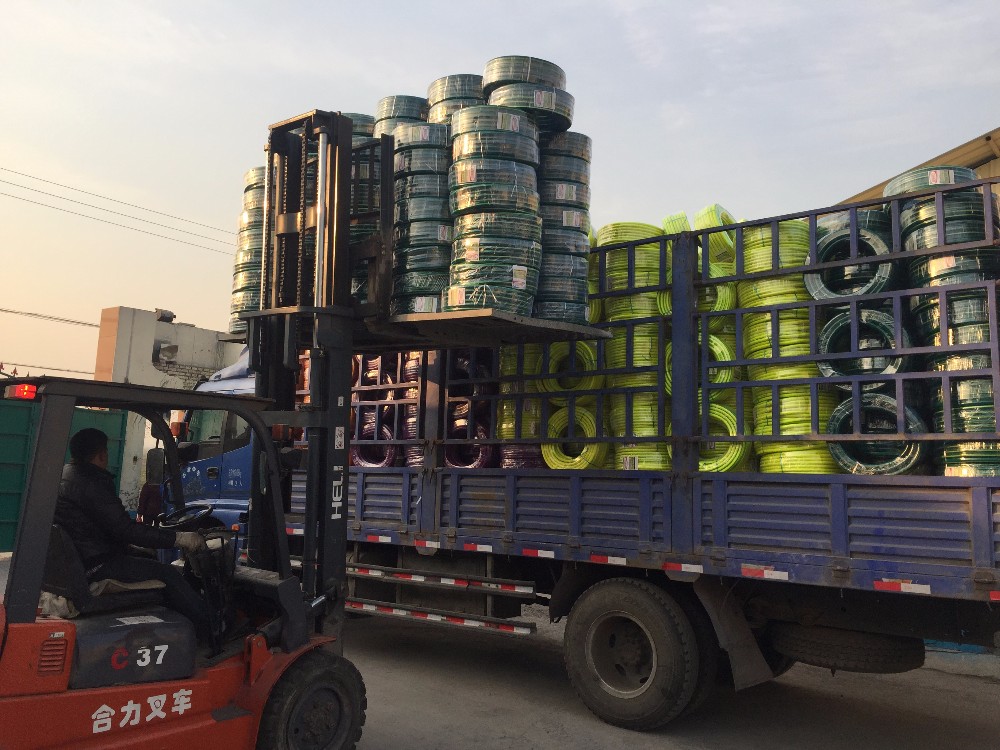oxygen & acetylene hose
Understanding Oxygen and Acetylene Hoses Essential Tools for Welding and Cutting
In the world of welding and metal fabrication, the use of oxygen and acetylene hoses is integral to ensuring safety and efficiency. These hoses are designed to transport two of the most critical gases used in oxy-acetylene welding oxygen and acetylene. Understanding their function, construction, and maintenance is crucial for anyone involved in welding operations.
Composition and Structure
Oxygen hoses are typically colored green, while acetylene hoses are red. This color-coded system helps prevent dangerous mixing-ups that could lead to catastrophic accidents. The construction of these hoses is designed to withstand high pressures; they are made from durable materials like rubber or thermoplastic compounds that provide flexibility and resistance to abrasions. Furthermore, both types of hoses are reinforced with layers of synthetic fibers to enhance their strength and durability.
Functional Principles
In oxy-acetylene welding, oxygen and acetylene are mixed in a torch to create an extremely hot flame, capable of melting various metals for cutting or joining. The hoses connect the gas tanks to the welding torch, and their ability to maintain high pressure is paramount. Typically, the oxygen is delivered at a pressure of around 40 to 60 psi, while acetylene should not exceed 15 psi to avoid instability.
oxygen & acetylene hose

Safety Precautions
Safety is paramount when handling oxygen and acetylene hoses. It is crucial to inspect hoses regularly for any signs of wear, cracking, or damage. Any compromised hose must be replaced immediately to prevent leaks that could lead to fire or explosions. Additionally, hoses should be stored properly when not in use, coiled loosely and kept away from sharp objects, heat sources, and chemicals that could degrade the material.
Best Practices for Use
To ensure optimal performance, users should always keep the hoses clean and free from debris. When connecting hoses to gas cylinders and torches, ensure that the connections are secure but not overly tight. It is equally important to use appropriate flashback arrestors, which are devices that prevent flame from traveling back into the hoses, mitigating the risk of fire.
Conclusion
Oxygen and acetylene hoses are vital components in the welding and cutting process. By understanding their structure, functioning principles, and safety requirements, welders can enhance their efficiency while ensuring a safe working environment. Proper care and attention to these hoses not only prolong their lifespan but also uphold the integrity of the welding operation, making them indispensable tools in any fabrication shop.
-
Top Quality Oxy Acetylene Hoses for Sale Fit for Welding DemandsNewsJul.28,2025
-
The Future of Pneumatic Air Tubes in IndustryNewsJul.28,2025
-
Superior and Reliable LPG Hose Pipe Solutions for Every NeedNewsJul.28,2025
-
Exceptionally Durable and Versatile Premium Braided PVC TubingNewsJul.28,2025
-
Best Adapters for Connecting Garden Hose to PVC Pipe ConnectionsNewsJul.28,2025
-
The Essential Role of LPG Hoses in Safe and Efficient Gas DistributionNewsJul.16,2025














